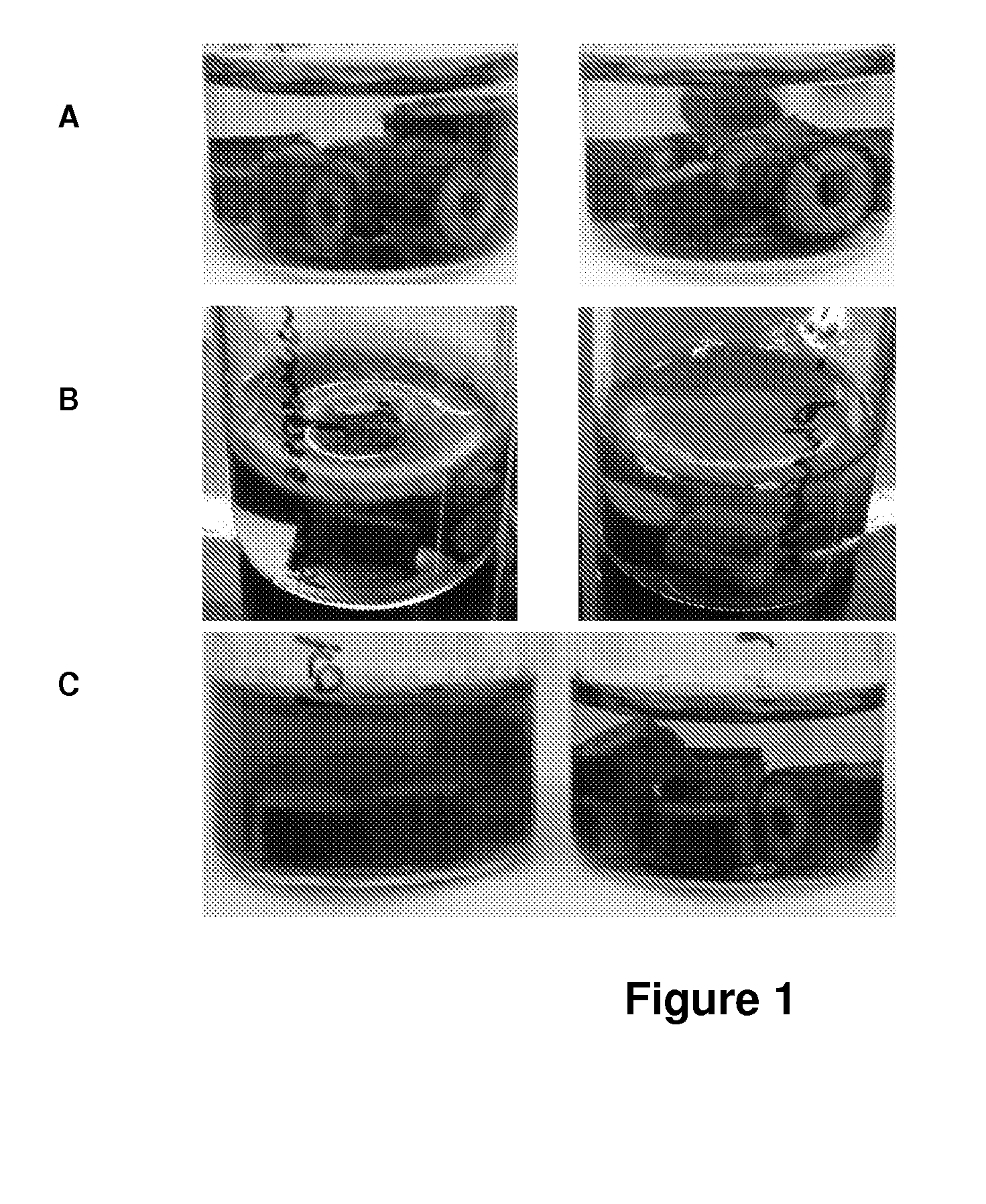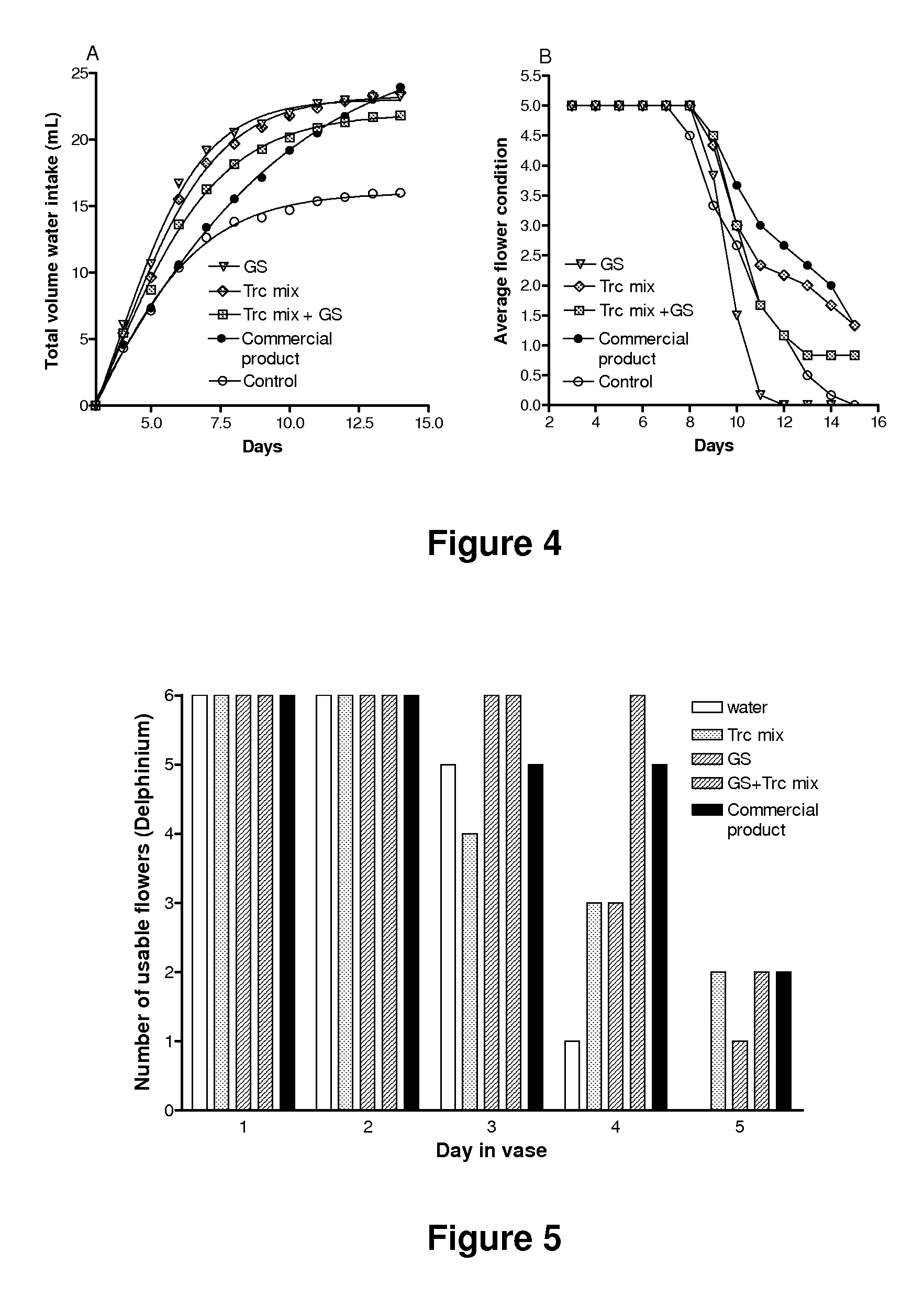Antimicrobial peptide compositions for plants
a technology of peptides and compositions, applied in the field of antimicrobial compositions, can solve the problems of reducing the yield and quality of fresh produce, threatening global food security, and major losses in marketable fruits, so as to improve the solubility, bioavailability and/or bioactivity, and reduce the risk of contamination, the effect of limiting toxicity
- Summary
- Abstract
- Description
- Claims
- Application Information
AI Technical Summary
Benefits of technology
Problems solved by technology
Method used
Image
Examples
examples
Antimicrobial Activity
[0086]The antimicrobial activities of a tyrocidine mixture (Trc mix), as well as purified tyrocidines, tryptocidine C, phenycidine A and gramicidin S (GS) were analyzed. The Trc mix typically contained TrcA / A1 (30-35%), TrcB / B1 (30-35%), TrcC / C1 (20-25%), TpcA / B / C (5-10%) and PhcA and minor analogues (90%) and gramicidin S analogues (<10%).
[0087]Microdilution broth and agar assays were used to assess the antifungal activity of the cyclic decapeptides in liquid media and on solid (gel) media, respectively. In broth and agar medium, the Trc mix displayed significant activity against selected fungal pathogens, for example Phaeoacremonium aleophilum, Phomopsis viticola, Fusarium solani, F. oxysporum, F. verticilliodes, Cilidocarpon liriodendri and Botrytis cinerea (Table 1). GS also showed significant activity against these fungal pathogens. The Trc mix and GS showed a broad spectrum low micromolar antibacterial activity, in particular against the food pathogen L. ...
PUM
| Property | Measurement | Unit |
|---|---|---|
| Antimicrobial properties | aaaaa | aaaaa |
Abstract
Description
Claims
Application Information
 Login to View More
Login to View More - R&D
- Intellectual Property
- Life Sciences
- Materials
- Tech Scout
- Unparalleled Data Quality
- Higher Quality Content
- 60% Fewer Hallucinations
Browse by: Latest US Patents, China's latest patents, Technical Efficacy Thesaurus, Application Domain, Technology Topic, Popular Technical Reports.
© 2025 PatSnap. All rights reserved.Legal|Privacy policy|Modern Slavery Act Transparency Statement|Sitemap|About US| Contact US: help@patsnap.com



